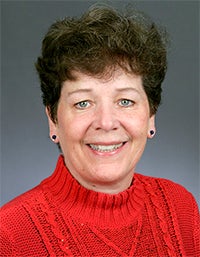Grow better paying jobs in all parts of state
Published 3:52 pm Saturday, February 14, 2015
One of the top priorities of the new House Republican majority is growing better-paying jobs in all parts of Minnesota. While our unemployment rate is among the lowest in the country, families still haven’t
recovered fully from the recession when it comes to money in their pockets.
The real median household income for Minnesota families has actually dropped between 2008 and 2013 according to U.S. Census data, a sign that while we’ve recovered many of the jobs, we haven’t recovered enough of the quality, good-paying jobs that can support families.
The unemployment rate remains stubbornly high in parts of Greater Minnesota, and anyone who lives in one of the small towns around our district knows that smaller communities aren’t doing quite as well as the Twin Cities or regional centers.
In order to grow better-paying jobs, we have to be thoughtful in our approach and pass specific solutions to address specific problems. It’s not enough to simply say “lower taxes” (although that may help!) and expect the jobs to appear out of thin air.
That’s why I’m proud that my colleagues have taken a solutions-driven approach and crafted bills to grow specific industries that will help grow jobs in parts of the state where the unemployment rate is higher, and encourages workforce development to ensure that we have qualified, talented Minnesotans ready to step into these new jobs.
Our jobs bill encourages increased research and development in all parts of the state (not just Greater Minnesota) by offering tax incentives to companies who invest their research dollars here in Minnesota. The jobs bill also offers tax credits to companies who expand in industries that provide good-paying jobs like mining, high-tech, manufacturing and timber.
On the workforce development side, we want to offer refundable tax credits for students who graduate in Science, Technology, Engineering and Math (STEM) fields, as well as long-term care and nursing.
By encouraging students to pursue degrees and jobs in these fields, we can make sure we have the workers necessary to fill newly created positions in highly technical fields, and bolster our long-term care and nursing home workforce.
Minnesota as a whole is facing a projected shortage of long-term care workers needed to care for our aging population. This problem is even more pronounced in Greater Minnesota where there are fewer nursing homes and long-term care facilities, some of whom are forced to limit the number of residents due to lack of staff.
I’ve spoken to a number of nursing homes here in Albert Lea and around our district about the need to be more competitive in long-term care, and the desperate need for more workers to fill these positions. I anticipate we will see several other bills to address long-term care in the coming weeks and months.
A better-trained workforce means more people working in jobs that can support families. The jobs we intend to grow through our various jobs-related bills and provisions are ones that will result in growing family budgets and more take-home pay.
Growing better-paying jobs is a bipartisan goal that I think can bring together both sides of the aisle. I look forward to a continued discussion with my colleagues on how we can reach that goal and help families put more money in their pockets.
Peggy Bennett, R-Albert Lea, is the House representative for District 27A.


